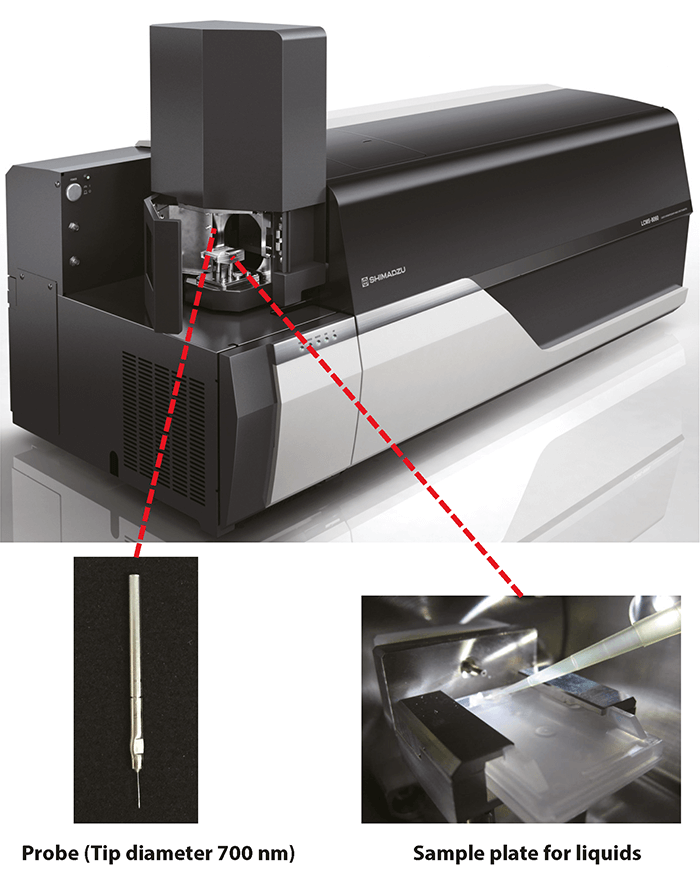Fugu (pufferfish) has long been a familiar to the Japanese as high-quality food fish, and is now consumed in other countries as well. Even though it is widely known that certain parts and species of fugu contain the deadly poison tetrodotoxin (TTX, also called fugu poison), incidents of fugu poisoning occur frequently due to careless control.
Establishment of a quick and simple detection method for TTX originating from fugu has been strongly desired, not only for sites involved in food hygiene and quality control, but also for general consumers, who have a heightened awareness of food safety.
This article introduces a quick TTX analysis method using the new Shimadzu DPiMS-8060 mass spectrometer (Fig. 1), which combines the new ionization method called probe electro spray ionization (PESI) and a tandem-type mass spectrometer. A direct rapid analysis method for TTX contained in fugu which does not require pretreatment is also introduced. This method is applicable not only to the liver and ovaries of poisonous fugu, which are widely known to contain TTX, but also to the skin and muscles, which may contain TTX depending on the species.
 Fig. 1 DPiMS™-8060
Fig. 1 DPiMS™-8060




